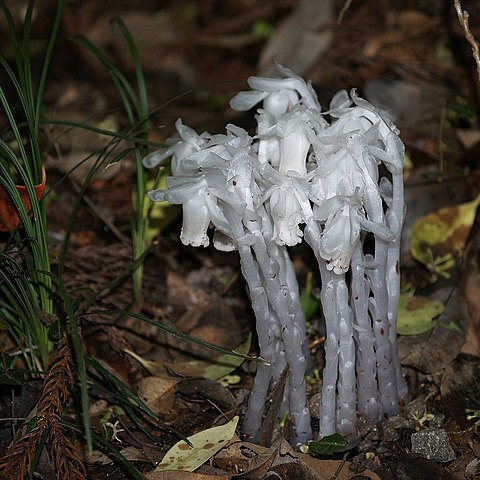Echlorophyllose, small, ephemerous, saprophytic, leafless herbs, white or with bluish tinge; stem stoutish, erect, simple, laxly to subdensely set with large or rather small, ± imbricate or rather distant spiral scales; roots fleshy. Flower regular, solitary, terminal. Sepaloid scales inserted immediately below the petals, 0-2. Petals 3-4(-5), free, erect, imbricate, forming a kind of campanulate corolla. Stamens 6-8(-10), equal or alternately a little longer; filaments linear, flattened, or thick-filiform; anthers subreniform, almost basifix, cells parallel to each other, dehiscent by transverse slits. Ovary ovoid to pear-shaped, gradually narrowed to a short (or rarely to a longer) style; stigma thick, cushion-like, somewhat deepened in its centre, very shortly 4-or 5-lobed; placentas 6-13, parietal, slightly prominent, with many ovules. Fruit fleshy, baccate, remaining reflexed as is the flower. Seeds ∞, oval to roundish without appendages; testa ± reticulate.

